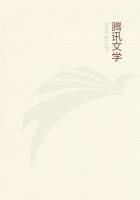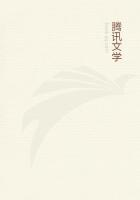PERHAPS the most familiar application of the principle that like produces like is the attempt which has been made by many peoples in many ages to injure or destroy an enemy by injuring or destroying an image of him, in the belief that, just as the image suffers, so does the man, and that when it perishes he must die. A few instances out of many may be given to prove at once the wide diffusion of the practice over the world and its remarkable persistence through the ages. For thousands of years ago it was known to the sorcerers of ancient India, Babylon, and Egypt, as well as of Greece and Rome, and at this day it is still resorted to by cunning and malignant savages in Australia, Africa, and Scotland. Thus the North American Indians, we are told, believe that by drawing the figure of a person in sand, ashes, or clay, or by considering any object as his body, and then pricking it with a sharp stick or doing it any other injury, they inflict a corresponding injury on the person represented. For example, when an Ojebway Indian desires to work evil on any one, he makes a little wooden image of his enemy and runs a needle into its head or heart, or he shoots an arrow into it, believing that wherever the needle pierces or the arrow strikes the image, his foe will the same instant be seized with a sharp pain in the corresponding part of his body; but if he intends to kill the person outright, he burns or buries the puppet, uttering certain magic words as he does so. The Peruvian Indians moulded images of fat mixed with grain to imitate the persons whom they disliked or feared, and then burned the effigy on the road where the intended victim was to pass. This they called burning his soul.
A Malay charm of the same sort is as follows. Take parings of nails, hair, eyebrows, spittle, and so forth of your intended victim, enough to represent every part of his person, and then make them up into his likeness with wax from a deserted bees' comb. Scorch the figure slowly by holding it over a lamp every night for seven nights, and say:
It is not wax that I am scorching, It is the liver, heart, and spleen of So-and-so that I scorch.
After the seventh time burn the figure, and your victim will die. This charm obviously combines the principles of homoeopathic and contagious magic; since the image which is made in the likeness of an enemy contains things which once were in contact with him, namely, his nails, hair, and spittle. Another form of the Malay charm, which resembles the Ojebway practice still more closely, is to make a corpse of wax from an empty bees' comb and of the length of a footstep; then pierce the eye of the image, and your enemy is blind; pierce the stomach, and he is sick; pierce the head, and his head aches; pierce the breast, and his breast will suffer. If you would kill him outright, transfix the image from the head downwards; enshroud it as you would a corpse; pray over it as if you were praying over the dead; then bury it in the middle of a path where your victim will be sure to step over it. In order that his blood may not be on your head, you should say:
It is not I who am burying him, It is Gabriel who is burying him.
Thus the guilt of the murder will be laid on the shoulders of the archangel Gabriel, who is a great deal better able to bear it than you are.
If homoeopathic or imitative magic, working by means of images, has commonly been practised for the spiteful purpose of putting obnoxious people out of the world, it has also, though far more rarely, been employed with the benevolent intention of helping others into it. In other words, it has been used to facilitate childbirth and to procure offspring for barren women. Thus among the Bataks of Sumatra a barren woman, who would become a mother, will make a wooden image of a child and hold it in her lap, believing that this will lead to the fulfilment of her wish. In the Babar Archipelago, when a woman desires to have a child, she invites a man who is himself the father of a large family to pray on her behalf to Upulero, the spirit of the sun. A doll is made of red cotton, which the woman clasps in her arms, as if she would suckle it. Then the father of many children takes a fowl and holds it by the legs to the woman's head, saying, O Upulero, make use of the fowl; let fall, let descend a child, I beseech you, I entreat you, let a child fall and descend into my hands and on my lap. Then he asks the woman, Has the child come? and she answers, Yes, it is sucking already. After that the man holds the fowl on the husband's head, and mumbles some form of words. Lastly, the bird is killed and laid, together with some betel, on the domestic place of sacrifice. When the ceremony is over, word goes about in the village that the woman has been brought to bed, and her friends come and congratulate her. Here the pretence that a child has been born is a purely magical rite designed to secure, by means of imitation or mimicry, that a child really shall be born; but an attempt is made to add to the efficacy of the rite by means of prayer and sacrifice. To put it otherwise, magic is here blent with and reinforced by religion.
Among some of the Dyaks of Borneo, when a woman is in hard labour, a wizard is called in, who essays to facilitate the delivery in a rational manner by manipulating the body of the sufferer. Meantime another wizard outside the room exerts himself to attain the same end by means which we should regard as wholly irrational. He, in fact, pretends to be the expectant mother; a large stone attached to his stomach by a cloth wrapt round his body represents the child in the womb, and, following the directions shouted to him by his colleague on the real scene of operations, he moves this make-believe baby about on his body in exact imitation of the movements of the real baby till the infant is born.















